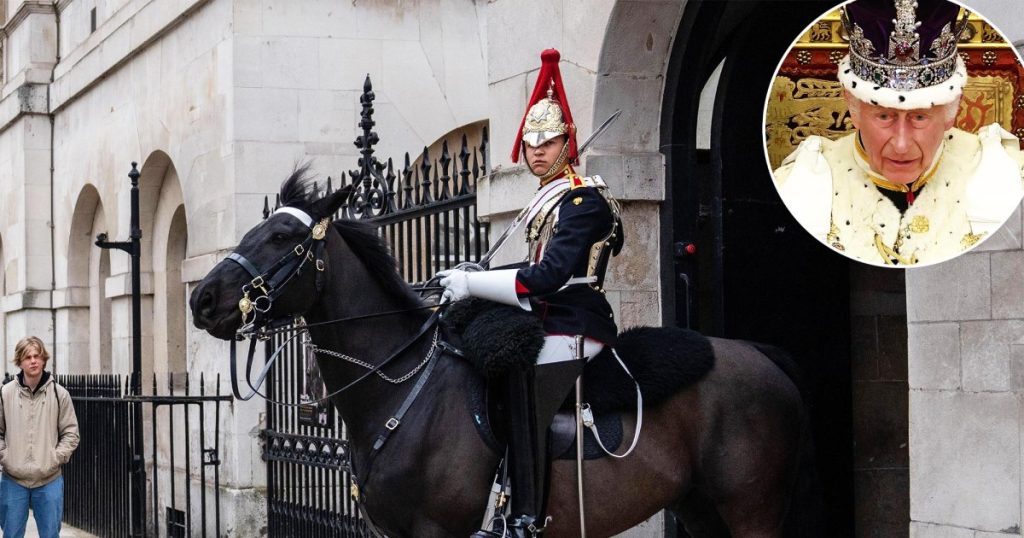In London outside the Household Cavalry Museum, a tourist was bitten by one of King Charles III’s guard horses while trying to take a photo with the animal. Despite warning signs in the area advising visitors not to touch the horses, several tourists approached the horse and attempted to pet it, resulting in the biting incident. The incident was captured in footage showing the tourist being bitten on the arm by the horse, causing her visible injury. This is not the first such incident involving tourists disregarding warnings from royal horses, as similar incidents have occurred in the past.
In response to the incident, the United Kingdom Ministry of Defence issued a statement emphasizing the importance of respecting the warnings and keeping a safe distance from the horses. They highlighted the busy nature of the area and the need to ensure the safety of both those on duty and the public. The statement also mentioned that soldiers are allowed to verbally warn tourists to keep their distance and can even present their bayonets if necessary. The Household Cavalry, which includes the King’s Life Guards and The Blues & Royals, is responsible for carrying out mounted ceremonial duties on State and Royal occasions.
Other incidents involving tourists and royal horses have occurred, including a tourist outside Buckingham Palace being head-butted by a King’s Guard horse and falling to the ground. Princess Anne also had an incident involving a horse at Gatacomb Park, resulting in head injuries that required her to be airlifted to a hospital. Her husband confirmed that she was recovering well after the incident. These incidents serve as a reminder of the importance of respecting the boundaries and warnings when interacting with royal horses to ensure the safety of both visitors and the animals.
The footage of the tourist being bitten by the guard horse outside the Household Cavalry Museum sparked discussion about the need for increased awareness and adherence to warnings when interacting with such animals. The clear signage in the area warning visitors not to touch the horses serves as a reminder of the potential dangers of disregarding these warnings. The incident also highlights the challenges faced by soldiers and horses in crowded tourist areas, where visitors may not always understand the risks involved in approaching the animals.
Tourists visiting areas where royal horses are present should be mindful of the warnings and signs advising them to keep a safe distance from the animals. Ignoring these warnings can result in dangerous situations for both visitors and the animals themselves. Respecting the boundaries set by the Ministry of Defence and the Household Cavalry is crucial to ensuring the safety and well-being of all parties involved. Incidents like the one involving the bitten tourist serve as a cautionary tale for future visitors to exercise caution and awareness when interacting with royal horses in public settings.


